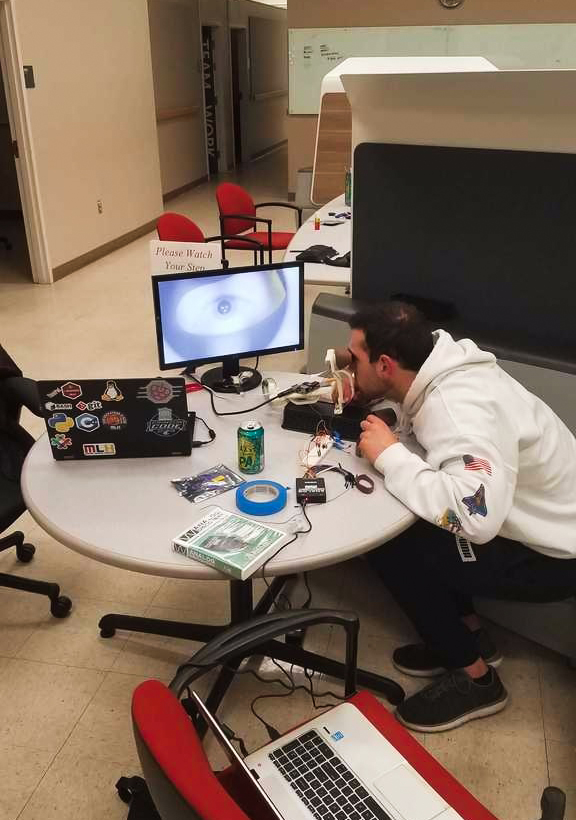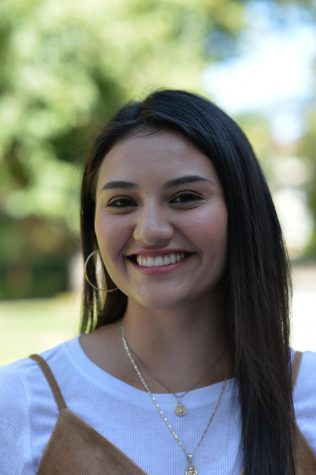Students’ technology could improve autism diagnosis
Most children diagnosed around age 4, but app creators hope to lower age
COURTESY OF LARS NEUENSCHWANDER
TJ Goble, a senior majoring in neuroscience, uses the Appiture prototype and its external hardware component.
March 25, 2019
Two WSU students created an app healthcare professionals can use to improve the screening protocols for early diagnosis of children with autism spectrum disorder (ASD).
TJ Goble, a senior majoring in neuroscience, said healthcare professionals would interact with “Appiture” on their mobile device, but the app itself will also have an external hardware component.
The hardware component will record a child’s pupil, which will then gather data that can be used to identify cases of ASD.
Goble said they could analyze the reflex pathway of the pupil by shining a light in the eye, which causes the pupil to shrink automatically.
Lars Neuenschwander, a senior majoring in bioengineering, said the eye is stimulated so it can emit a response in pupils. There are characteristics that are different in children with ASD.
“Currently, it takes an hour to screen a child for autism, which is way too long and it’s subjective,” Goble said.
He said the average age for a diagnosis of a child with ASD is 4 years old.
“We believe that we can bring that screening time down, make it easier, remove the subjectivity and with all that, diagnose kids with autism at an earlier age and help them get into helpful programs,” Goble said.
Neuenschwander said a benefit of early intervention programs is that a younger child’s brain is more adaptable, which allows them to perform tasks for improved independence and reduce symptom severity of ASD.
“The earlier you can catch it,” he said, “the better off that kid is gonna be for the rest of their life.”
Goble said they have faced obstacles with figuring out how to build the app, such as acquiring the appropriate software in a short amount of time.
ASD was previously thought to be a psychological disorder, he said, but it is now known among healthcare professionals that ASD has key neurological underpinnings.
“Because of this knowledge, we were able to shift from behavioral questionnaires to pupillary analysis,” Goble said.
He said although they have a hardware prototype, software and app design, the next step would be to bring all of the facets together.
Neuenschwander said they are close to having a full-scale product release. They will participate in the WSU Business Plan Competition on April 25 and will have a prototype and a live demo.
















